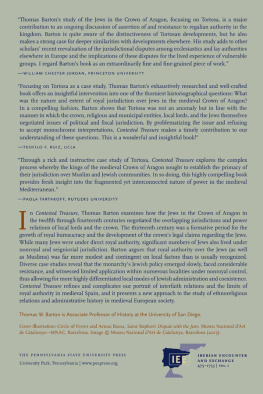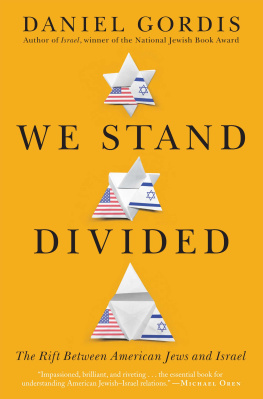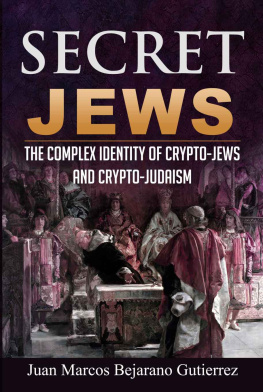CONTESTED TREASURE

SERIES EDITORS
Erin Kathleen Rowe and Michael A. Ryan
THE PENNSYLVANIA STATE UNIVERSITY PRESS
The Iberian Peninsula has historically been an area of the world that fostered encounters and exchanges among peoples from different societies. For centuries, Iberia acted as a nexus for the circulation of ideas, people, objects, and technology around the pre-modern western Mediterranean, Atlantic, and eventually the Pacific. Iberian Encounter and Exchange, 4751755 combines a broad thematic scope with the territorial limits of the Iberian Peninsula and its global contacts. In doing so, works in this series will juxtapose previously disparate areas of study and challenge scholars to rethink the role of encounter and exchange in the formation of the modern world.
ADVISORY BOARD
Paul H. Freedman
Richard Kagan
Marie Kelleher
Ricardo Padrn
Teofilo F. Ruiz
Marta V. Vicente
CONTESTED
TREASURE
JEWS AND AUTHORITY IN THE CROWN OF ARAGON
THOMAS W. BARTON
THE PENNSYLVANIA STATE UNIVERSITY PRESS
UNIVERSITY PARK, PENNSYLVANIA
Library of Congress Cataloging-in-Publication Data
Barton, Thomas W., 1976 , author.
Contested treasure : Jews and authority in the crown of Aragon / Thomas W. Barton.
pages cm (Iberian encounter and exchange, 4751755)
Summary: Examines how the Jews in the Crown of Aragon in the twelfth through fourteenth centuries negotiated the overlapping jurisdictions and power relations of local lords and the crownProvided by publisher.
Includes bibliographical references and index.
ISBN 978-0-271-06472-7 (cloth : alk. paper)
1. JewsSpainAragonHistoryTo 1500.
2. JewsLegal status, laws, etc.SpainAragonHistoryTo 1500.
3. JewsSpainTortosaHistoryTo 1500.
4. Aragon (Spain)Politics and government.
I. Title.
DS135.S75A7215 2015
946.55004924dc23
2014021730
Copyright 2015 The Pennsylvania State University
All rights reserved
Printed in the United States of America
Published by The Pennsylvania State University Press,
University Park, PA 16802-1003
The Pennsylvania State University Press is a member of the Association of American University Presses.
It is the policy of The Pennsylvania State University Press to use acid-free paper. Publications on uncoated stock satisfy the minimum requirements of American National Standard for Information SciencesPermanence of Paper for Printed Library Material, ANSI Z 39.481992.
This book is printed on paper that contains 30% post-consumer waste.
To my parents and step-parents
Contents
This study emerged as a side interest while I was transforming my dissertation on the conquest and settlement of the Ebro River Valley into a monograph. It increasingly stole time away from that initial project until it became my primary research focus. As Contested Treasure has evolved from a germ of a research idea to a conference paper to an article to an unwieldy book manuscript that had to be reduced, streamlined, and polished, I have benefited from the advice and support of numerous friends, colleagues, and collaborators.
I first had the opportunity to put together some of my ideas when I collaborated in an unusually synergistic session held at the delightful Sewanee Medieval Colloquium in 2009. I owe Maya Soifer Irish a debt of gratitude for inviting me to take part in that panel and for teaching me all that she has about Jewish-Christian relations, informally and as a collaborator, since then. I learned much from the stimulating contributions by Gregory Milton and Tom Burman at that gathering.
The four anonymous reviewers at Speculum provided vital feedback for revising the article manuscript. I thank Paul Szarmach, Ronald Musto and Eileen Gardiner, and Jacqueline Brown for their assistance and patience over the course of numerous revisions as well as their understanding when I later chose to withdraw my submission.
As always, the hosts and participants at the California Medieval Seminar at the Huntington Library provided sage advice as I was preparing to enlarge the project into a book manuscript. I would like to thank Karen Burgess for organizing the seminar as well as recognize, in particular, Piotr Grecki, Sarah Whitten, Ned Schoolman, Scott Wells, and Antonio Zaldivar for their helpful feedback on that occasion. The recurring seminar of doctoral students of the Crown of Aragon organized by Daniel Duran i Duelt and Stphane Pquignot at the CSICs Instituci Mila i Fontanals in Barcelona was a delightful and illuminating gathering that served as a useful sounding board for some of my earlier ideas about Tortosas urban history.
An indefatigable supporter of all things medieval and an all-around mensch, Mike Ryan alerted me to the creation of the Iberian Encounter and Exchange, 4751755 series he would be editing with Erin Rowe. I thank them both for doing their part to find a home for the manuscript as well as to support its revision and improvement. The Pennsylvania State Press has been a delight to work with and helped, in every conceivable way, to make production as effortless as possible. Eleanor Goodman has been everything an author could hope for in an editor: open, upfront, accessible, prompt, and (above all) patient. Julie Schoelles meticulously edited the manuscript, rescuing me from all sorts of embarrassing infelicities. I thank Charlee Redman, Jennifer Norton, Brian Beer, Laura Reed-Morrisson, and Patty Mitchell for helpful assistance with logistics, as well as everyone else at the press involved in the project. The two anonymous reviewers, whom I now know were Paula Tartakoff and Jonathan Ray, provided invaluable suggestions that greatly improved the finished manuscript. I naturally take full responsibility for any and all errors that might remain in the book.
I am incredibly grateful to Paul Freedman for standing by me unfailingly as a mentor and colleague over the past fifteen years and for teaching me so much of what I know about the medieval world, Catalonia, and fine dining. Thanks also to Carlos Eire for his consistent kindness and wise advice and to Adam Kosto for his valuable constructive criticism. Peter Brown inspired me to become a professional historian and has continued to encourage me since I left Princeton. I feel fortunate to have gotten to know and learn from Teo Ruiz while working on this project. I am thankful for his advice, support, boundless warmth and compassion, and contagious passion for history. Mike McGoverns unique ability to make history come alive deeply affected me as a teenager and helped fuel my desire to pursue the study of history in college. I enjoyed getting to know Ted Melillo and Ed Watts at Yale and am grateful to have them still as good friends and colleagues on opposite coasts. I thank Matt Wranovix, Brian Noell, Paul Abelsky, Susan McDonough, and Michelle Herder for being supportive members of my medievalist cohort during my time as a doctoral student.
I feel fortunate to have such supportive colleagues at the University of San Diego (USD). I would like to recognize all of the members of my History Department family, and in particular the unflagging advocacy and mentorship of Ken Serbin during his tenure as chair. The former dean of the College of Arts and Sciences, Mary Boyd, former provost, Julie Sullivan, and outgoing president, Mary Lyons, also provided essential support, as did my current dean, Noelle Norton. Im especially thankful for my friendships with Clara Oberle, Colin Fisher, Yi Sun, Maureen Byrnes, Avi Spiegel, and Jane Friedman. The research I have conducted in San Diego would not have been possible without the many books ordered via Interlibrary Loan by Alex Moran and the assistance of the staff at Copley Library and the Legal Research Center. The CIRCUIT system provided essential convenient access to the library collections at UCSD and San Diego State. My colleagues in the History and Religious Studies Departments, especially Len Smith, Mike Wert, and Ari Sammartino, helped make my year at Oberlin an especially fruitful one as I was first pondering what to make of this evidence concerning Tortosas Jews.







